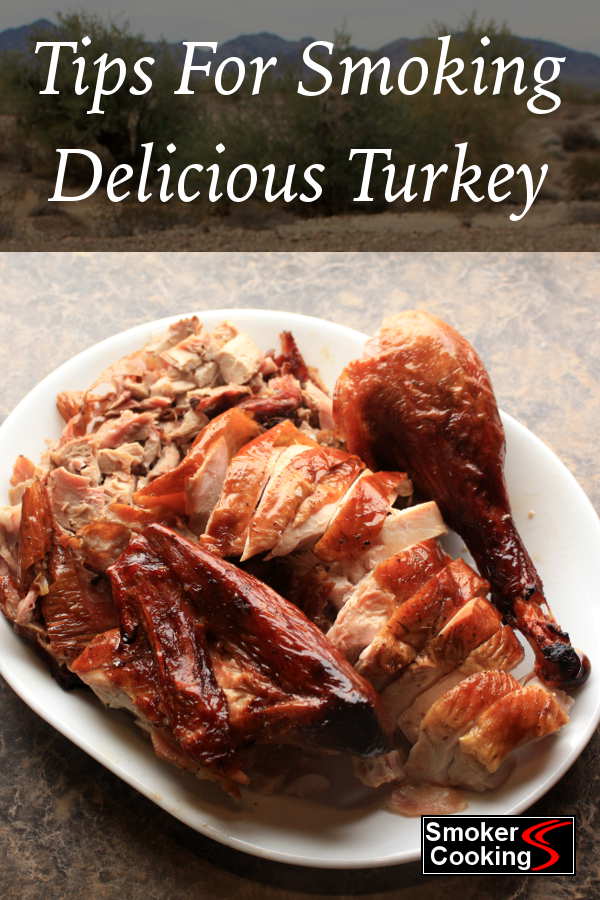Turkey Smoking Tips For Tasty Smoked Turkey
You'll make great smoked turkey when you bone up on these turkey smoking tips. Learn about brine, seasoning your turkey, and cooking turkeys in your smoker or on your grill.
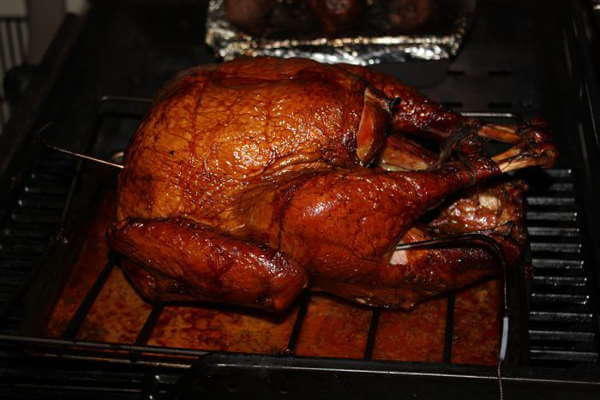
Smoked turkey is very popular, especially during the holiday season. There are lots of interesting recipes for brines, marinades and turkey dry rubs - finding variety is not a problem. But even seasoned with just salt and pepper, a properly smoked turkey will taste great.
Turkey Smoking Tips of the Meat Smoker Variety
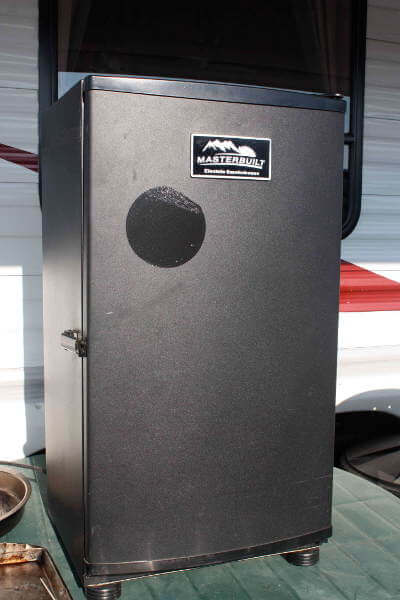
Turkey turns out great when smoked at 275-300 degrees, so well that there's really no need to cook it low and slow. I've had trouble reaching the higher smoker temperature in my vertical electric water smoker, but I found that if I kept the water pan empty I got better results.
When the water pan is empty, it's important to place another pan under the turkey to catch drips, otherwise the juices will burn in the bottom of the dry water pan. Either put the turkey directly in a pan or position a drip pan on a grate below the turkey.
If using a charcoal smoker, start with plenty of burning charcoal to get the temperature up. Adjust the vents as necessary to control the temperature.
Use a good remote thermometer to monitor the turkey internal temperature. If you just have one, use it in the breast. Better yet, use two, one in the breast and the second in one of the thighs.
Stay away from charcoal lighter fluid and "Match Light" types of charcoal. Use a charcoal lighting chimney so your turkey won't taste like kerosene.
Grill Smoking Tips For Making Great Tasting Turkey
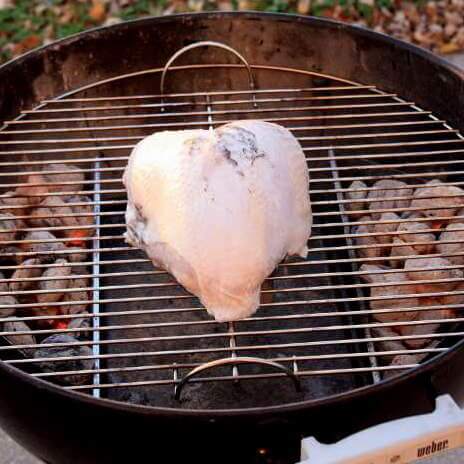
Turkey can also be grill-smoked in your charcoal or gas grill. Use the indirect grilling method - heat positioned at the sides, and no heat directly underneath. Adjust the gas valves, or add charcoal as needed to maintain the desired temperature.
Prepare The Turkey Before Brining and Seasoning
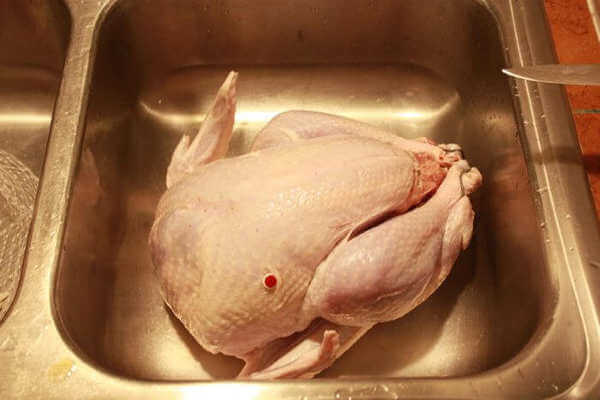
Thaw frozen turkeys in the refrigerator, over several days. It can take up to 5 days to thaw a big one. Alternatively, thaw the turkey in a sink full or cooler full of cold water. Don't allow the water to rise above 40 degrees. And never thaw a turkey at room temperature.
Once thawed, trim off fat deposits and remove the giblets, neck and whatnot from the body cavity and from under the neck skin. Rinse well, inside and out. Separate the skin from the breast area.
The breast meat will brine more thoroughly, and you'll be able to rub dry seasonings directly on the meat. After seasoning, re-position the skin and secure with a few toothpicks.
Turkey Brining Tips
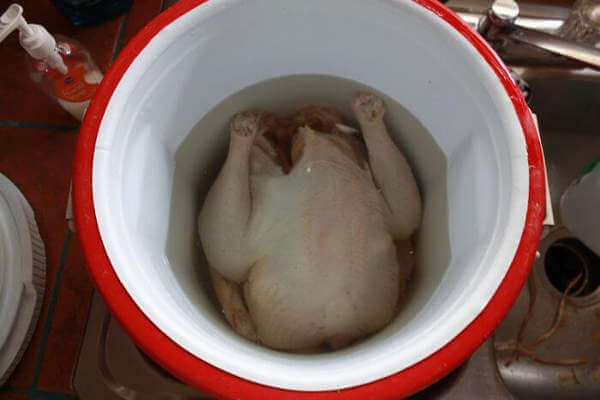
Use a good turkey brine recipe. It's best to boil the water, sugar and salt together until completely dissolved. When boiled, brine works better, since the salt and sugar are more completely dissolved - some sort of molecular magic happens.
Minimum brining time for a small turkey is 12 hours, and up to 24 hours. Bigger ones can be brined up to 48 hours.
Rinse well after brining. If you can spare an extra day, it helps to put the turkey in the fridge overnight, uncovered. The skin will dry, and the salt will continue to absorb deeper and cure the flesh. If this step is skipped, just be sure to dry the bird well before seasoning and smoking.
Season the Turkey With Savory Spices and Herbs
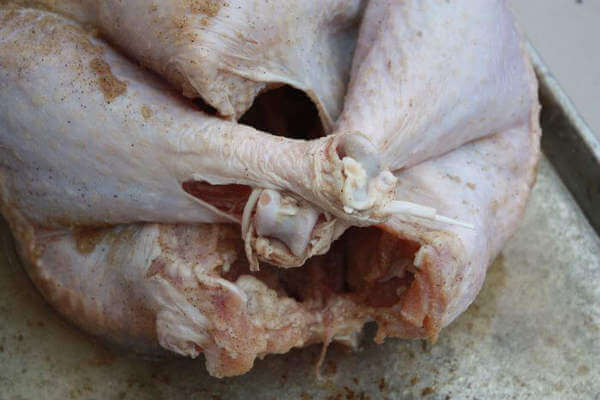
The turkey can be seasoned with just salt and pepper, or a tasty turkey dry rub can be used, either homemade rubs or commercial ones.
Get flavor inside the turkey, too. Season the body cavity with dry rub and some of the flavor will work its way into the turkey from the inside.
Turkey Smoking Tips for Choosing and Using Smoker Woodchips
My favorite smoker wood is apple, followed by cherry then oak. But you can use whatever you prefer. Just realize that some woods have a stronger flavor, so less is needed.
When using a gas or charcoal grill, using foil-wrapped wood chips for smoke work well. Placing the packets directly over the gas burner or charcoal, and you'll soon see beautiful pale blue smoke.
Make a Few Foil Packets Of Smoker Wood Chips
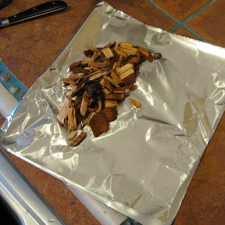
Place 1/2 cup of wood chips on a square of heavy duty foil.
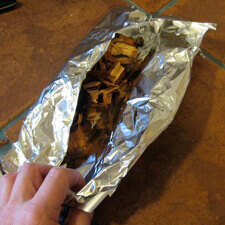
Wrap the chips securely in the foil.
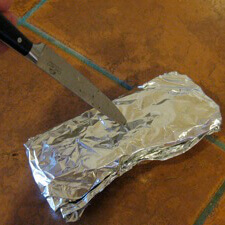
Prick a few holes in the top of the wood chip foil pack.
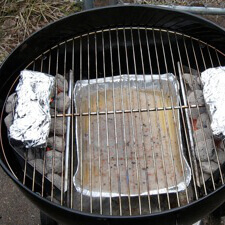
Place packet directly over heat source, holes at top.
Using charcoal? Wood chunks can be buried in the charcoal as you load the pan or ring. You can also add water soaked wood chips or chunks directly on top of the briquettes as desired.
At times, chunks can ignite and cause the smoker temperature to rise sharply. To prevent this from happening, wrap the smoker wood in heavy duty foil, and prick small holes in the top. Lay directly on top of the coals.
Using an electric smoker? Use the wood chip pan if it has one. If not, wrap the wood in foil and lay next to the element. If your electric smokers is not vented, use less wood to prevent over smoking the turkey.
For additional information, you'll find information on the following
topics at More Turkey Smoking Tips:
-
Best Temperature for Turkey Smoking
-
How Long to Smoke Turkey
-
When Is Turkey Done?
-
Resting The Turkey After Smoking
-
Freezing Smoked Turkey
- Reheating Smoked Turkey
- You Are Here: Home >
- Tips >
- Turkey Smoking Tips
